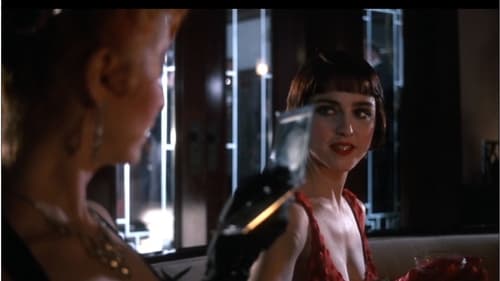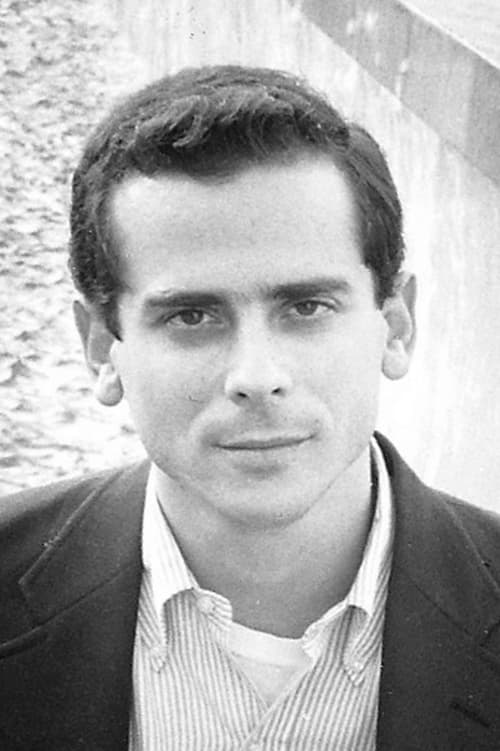Howard Brookner
출생 : 1954-04-30, New York City, New York, USA
사망 : 1989-04-27
약력
Howard Brookner (April 30, 1954 – April 27, 1989) was an American film director. He produced and directed the documentary Burroughs: the Movie about William S. Burroughs (1983), Robert Wilson and the Civil Wars on theatre director Robert Wilson (1986), and directed, co-produced and co-wrote Bloodhounds of Broadway (1989).
From Wikipedia, the free encyclopedia.

Self (archive footage)
When Howard Brookner lost his life to AIDS in 1989, the 35-year-old director had completed two feature documentaries and was in post-production on his narrative debut, Bloodhounds of Broadway. Twenty-five years later, his nephew, Aaron, sets out on a quest to find the lost negative of Burroughs: The Movie, his uncle's critically-acclaimed portrait of legendary author William S. Burroughs. When Aaron uncovers Howard's extensive archive in Burroughs’ bunker, it not only revives the film for a new generation, but also opens a vibrant window on New York City’s creative culture from the 1970s and ‘80s, and inspires a wide-ranging exploration of his beloved uncle's legacy.

Director
After two years of filming, director Howard Brookner brought inventor and photographer Robert E. Fulton III a trunkful of William S. Burroughs footage to see if Fulton could edit his film. The result was a decidedly experimental 23-minute cut. The director was looking for a more narrative approach, so Fulton’s edit was never used.

Producer
This musical is based on four short stories by Damon Runyon. In one tale, gambler Feet Samuels sells his body to science just as he realizes that Hortense loves him and that he would rather live than die. In another story, Harriet's parrot is killed, and she has problems dealing with her loss. Then, there is a gambler, "Regret", who has bloodhounds on his trail when he becomes a murder suspect. Finally, "The Brain" is bleeding profusely, and his friends search for a way to save his life through a blood transfusion.

Daffy Jack
This musical is based on four short stories by Damon Runyon. In one tale, gambler Feet Samuels sells his body to science just as he realizes that Hortense loves him and that he would rather live than die. In another story, Harriet's parrot is killed, and she has problems dealing with her loss. Then, there is a gambler, "Regret", who has bloodhounds on his trail when he becomes a murder suspect. Finally, "The Brain" is bleeding profusely, and his friends search for a way to save his life through a blood transfusion.

Screenplay
This musical is based on four short stories by Damon Runyon. In one tale, gambler Feet Samuels sells his body to science just as he realizes that Hortense loves him and that he would rather live than die. In another story, Harriet's parrot is killed, and she has problems dealing with her loss. Then, there is a gambler, "Regret", who has bloodhounds on his trail when he becomes a murder suspect. Finally, "The Brain" is bleeding profusely, and his friends search for a way to save his life through a blood transfusion.

Director
This musical is based on four short stories by Damon Runyon. In one tale, gambler Feet Samuels sells his body to science just as he realizes that Hortense loves him and that he would rather live than die. In another story, Harriet's parrot is killed, and she has problems dealing with her loss. Then, there is a gambler, "Regret", who has bloodhounds on his trail when he becomes a murder suspect. Finally, "The Brain" is bleeding profusely, and his friends search for a way to save his life through a blood transfusion.

Producer
Robert Wilson and the Civil Wars is an in-depth documentation of Robert Wilson’s ambitious attempt to stage an epic, twelve-hour, multinational opera for the 1984 Summer Olympics. Filmmaker Howard Brookner follows the avant-garde theatre director as he confronts a hectic work schedule, funding difficulties and relentless international travel in attempt to complete his preparations. The film examines Wilson’s unique theatrical style during The Civil Wars: A Tree Is Best Measured When It Is Down, which involves the continual creation of evocative stage sets, owing to a unique juxtaposition of movement, sound, text and image. Known for his precise, painterly images Wilson’s work derives more from visual art than the orthodox literary traditions of theatre. As a result, Wilson often challenges actors to perform in a boldly minimalist style, as well as collaborating with non-actors, such as young autistic poet Christopher Knowles in Einstein on the Beach.

Director
Robert Wilson and the Civil Wars is an in-depth documentation of Robert Wilson’s ambitious attempt to stage an epic, twelve-hour, multinational opera for the 1984 Summer Olympics. Filmmaker Howard Brookner follows the avant-garde theatre director as he confronts a hectic work schedule, funding difficulties and relentless international travel in attempt to complete his preparations. The film examines Wilson’s unique theatrical style during The Civil Wars: A Tree Is Best Measured When It Is Down, which involves the continual creation of evocative stage sets, owing to a unique juxtaposition of movement, sound, text and image. Known for his precise, painterly images Wilson’s work derives more from visual art than the orthodox literary traditions of theatre. As a result, Wilson often challenges actors to perform in a boldly minimalist style, as well as collaborating with non-actors, such as young autistic poet Christopher Knowles in Einstein on the Beach.

Director of Photography
An exploration of Burroughs’ life story, as told by Burroughs himself along with many of his contemporaries, including Allen Ginsberg, Brion Gysin, Francis Bacon, Herbert Huncke, Patti Smith, Terry Southern, and William Burroughs Jr.

Producer
An exploration of Burroughs’ life story, as told by Burroughs himself along with many of his contemporaries, including Allen Ginsberg, Brion Gysin, Francis Bacon, Herbert Huncke, Patti Smith, Terry Southern, and William Burroughs Jr.

Director
An exploration of Burroughs’ life story, as told by Burroughs himself along with many of his contemporaries, including Allen Ginsberg, Brion Gysin, Francis Bacon, Herbert Huncke, Patti Smith, Terry Southern, and William Burroughs Jr.

Gaffer
찰리 파커를 숭배하는 뉴욕의 젊은 청년 알리. 삶의 의미를 찾기 위해 뉴욕의 거리로 나선 그는, 기이한 사람들과 우연한 만남을 통해 점점 자신의 원했던 해답에 가까워짐을 느낀다.




